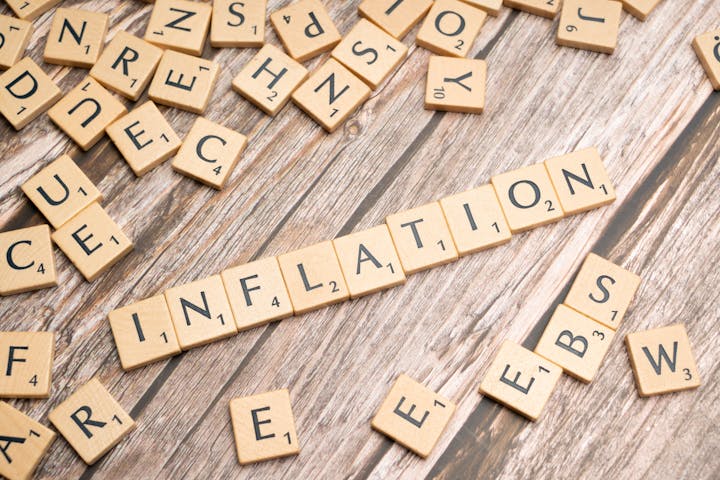Inflation in Germany has reached a staggering level not seen since 2008, sending ripples through the economy and raising concerns among citizens and businesses alike. As prices soar, the impact is being felt across various sectors, from everyday groceries to luxury goods. But what does this mean for you? Understanding inflation is crucial as it influences everything we buy and how much we earn. In this blog post, we’ll delve into the factors driving these price increases, explore their repercussions on different industries, and discuss practical strategies to navigate these turbulent economic waters. Whether you’re an individual trying to stretch your budget or a business owner grappling with rising costs, it’s essential to stay informed about inflation trends in Germany. Join us as we unpack the intricacies of this pressing issue affecting millions today! https://finanzasdomesticas.com/inflacion-en-alemania-la-mas-alta-desde-2008/
What is inflation and how does it affect the economy?
Inflation is the rate at which general prices for goods and services rise, eroding purchasing power. When inflation increases, each unit of currency buys fewer items than before. This diminishes what consumers can afford.
In an economy, moderate inflation is often seen as a sign of growth. However, when it spirals out of control, it can lead to uncertainty. Businesses may struggle with fluctuating costs, making pricing strategies challenging.
Consumers feel the pinch at grocery stores and gas stations as essentials become pricier. Savings also lose value over time if interest rates don’t keep pace with inflation.
Governments monitor these trends closely since high inflation can destabilize economies and fuel social unrest. The balance between encouraging spending and maintaining price stability becomes critical in fostering economic health during inflationary times.
Factors contributing to inflation in Germany
Several factors contribute to the rising inflation in Germany. One significant driver is the surge in energy prices. Global supply chain disruptions have caused oil and gas costs to skyrocket, impacting everyday expenses.
Another factor is increased consumer demand post-pandemic. As restrictions lifted, people rushed to spend savings accumulated during lockdowns. This sudden spike in demand has strained supply chains even further.
Labor shortages also play a role. Companies are struggling to find workers, forcing them to raise wages, which can lead businesses to pass those costs onto consumers.
Additionally, government stimulus measures intended to revive the economy have injected liquidity into markets. While necessary for recovery, this influx of money can stimulate inflation if not managed properly.
Geopolitical tensions and uncertainties surrounding global trade continue affecting market stability and pricing trends across various industries.
The impact of inflation on different sectors and industries in Germany
Inflation in Germany has far-reaching effects across various sectors. The manufacturing industry faces rising costs for raw materials, which can squeeze profit margins. As a result, some companies may increase product prices to maintain profitability.
The service sector is not exempt. Higher operational costs often lead businesses to pass on expenses to consumers. This impacts everything from dining out to personal services.
Real estate also feels the pinch as inflation drives up construction costs and rental prices. Potential homebuyers may find themselves priced out of the market.
Consumer goods see shifts too; essentials become more expensive while luxury items might experience stagnant demand as budgets tighten.
Each industry navigates its challenges differently, but all feel the weight of inflation’s impact on their operations and consumer behavior.
How the current inflation rate compares to previous years
Germany’s current inflation rate has surged to levels not seen since 2008. This spike stands in stark contrast to the relatively stable rates experienced over the last decade.
In previous years, inflation hovered around 1-2%. The economic climate was characterized by steady growth and controlled price increases. However, post-pandemic recovery efforts have altered this landscape dramatically.
Looking back further, Germany faced hyperinflation during the Weimar Republic era; those historical lessons still resonate today. Today’s figures reflect a mix of global supply chain disruptions and rising energy costs.
Comparatively, recent months show a steep climb from earlier averages. Consumers are feeling the pinch at grocery stores and gas stations alike. Each percentage point increase can significantly influence purchasing power across various demographics within society.
Strategies for individuals and businesses to cope with inflation
To navigate inflation, individuals should prioritize budgeting. Track expenses and identify areas where you can cut back without sacrificing quality of life.
Investing in essentials is key. Stock up on non-perishable items when prices are stable to avoid future spikes. This approach not only saves money but also ensures access during supply chain disruptions.
For businesses, adjusting pricing strategies may be necessary. Consider value-based pricing to reflect product worth while maintaining customer loyalty.
Exploring alternative suppliers can also reduce costs. Negotiating better terms or finding local options might mitigate supply chain issues and lower expenses.
Diversifying income streams helps both individuals and businesses remain resilient against fluctuating prices—whether through side gigs or new product lines, adaptability is crucial in an inflationary economy.
Government policies and actions to combat inflation
The German government has implemented various policies to counteract rising inflation. One primary strategy involves adjusting interest rates through the European Central Bank. Higher rates can help dampen consumer spending, which in turn can reduce inflationary pressures. https://finanzasdomesticas.com/inflacion-en-alemania-la-mas-alta-desde-2008/
Additionally, fiscal measures are being considered. These include targeted subsidies and support for vulnerable households facing increased costs of living. By alleviating financial burdens, the government aims to stabilize purchasing power.
Supply chain issues have also been a focus. Efforts to streamline logistics and enhance production capabilities may ease bottlenecks that contribute to price hikes.
Moreover, there is an emphasis on energy policy reforms aimed at reducing dependence on volatile markets and promoting renewable sources. This not only addresses immediate cost concerns but also aligns with long-term sustainability goals.
Through these multifaceted approaches, Germany hopes to navigate the complexities of its current economic landscape while safeguarding its citizens’ welfare.
Predictions for future inflation rates in Germany
Predictions for future inflation rates in Germany are shaping up to be a mixed bag. Economic analysts point to a variety of factors that could influence the trajectory moving forward. Supply chain disruptions continue to loom, and energy prices remain volatile.
Moreover, consumer demand shows signs of shifting as people adjust their spending habits post-pandemic. This dynamic might ease some pressure on prices but comes with uncertainty.
Central banks will likely respond by adjusting interest rates in an attempt to curb inflation while balancing economic growth. The interplay between these measures and global economic conditions complicates forecasting efforts.
Many experts suggest monitoring key indicators closely over the coming months. Insights from these trends will offer clues into how inflation may evolve and its potential impact on households and businesses alike. As always, staying informed is crucial during such unpredictable times in the economy.
Conclusion: The importance of keeping a close eye on inflation and its effects on the economy
Keeping a close eye on inflation is crucial for both individuals and businesses. It’s not just about numbers; it reflects the overall health of the economy. Rising inflation can erode purchasing power, making everyday goods more expensive. This hits consumers hard, especially those with fixed incomes.
For businesses, higher costs can squeeze margins and limit growth opportunities. Companies may need to adjust pricing or cut back on expenses to maintain profitability. Understanding these dynamics helps stakeholders make informed decisions.
Tracking inflation trends allows people and organizations to adapt proactively rather than reactively. Awareness of current economic conditions opens up avenues for better financial planning—whether that means adjusting budgets or reassessing investment strategies.
As we navigate this high-inflation environment in Germany, remaining vigilant will be key to mitigating its impact across various sectors of the economy. Keeping abreast of developments ensures readiness for whatever comes next in this ever-changing landscape.




